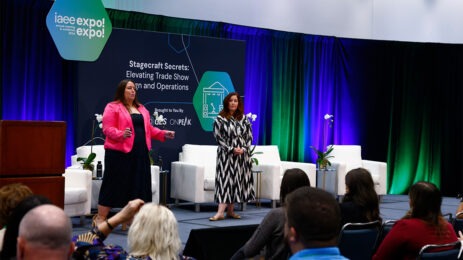Let’s call her Planner X. She stages a dozen or more meetings and events a year all over the country. Although she grew up on the East Coast, she’s lived in California for years and “takes green for granted.” One of the questions she always asks of prospective venues is, “Do you have a plan in place to donate excess or leftover food?”
Within the last five years, the answer is more often “yes.” “It’s become more of a common practice around the country,” she says. That doesn’t mean she doesn’t still get pushback on occasion, mostly from convention centers and unionized hotels, where procedures are closely followed and prescribed. The most common concern, in Planner X’s experience, is that a venue’s employees might be injured while handling food items to be donated. “Are they just doing their job, or is this an outside activity—that’s the worry,” she says.
In such cases, she seeks permission to engage a third party that has proof of insurance to enter the venue’s loading area.
Planner X estimates that as much as 15 percent of food at her events is left unconsumed and can potentially be donated. (If she knows how much that is by weight, she can calculate the number of meals it represents and how much CO2 is being kept out of landfill by using the Whole Earth Calculator mobile app, which was developed by hunger think-tank Rock and Wrap It Up!, whose mantra is “feeding people, not landfills.” More on RWU in a moment.
Buffet leftovers, she says, are the best candidates for donation to local charities or nonprofits. “Things that are easily resealable, especially proteins, into single-serving Ziplocks,” she says. “Stews or anything that can be reheated are great, too.”
Even though “donate leftovers” is being now added to more planners’ checklists, misconceptions and myths about this practice persist. Here are the top three.
Myth No. 1: It’s No Big Deal
Success measures for most planners focus on what happens at the event or meeting, not what happens afterward—although some companies, especially food manufacturers (Kellogg, for one) and food retailers (such as Walmart) include food donation in their CSR audits. Yet there can be little doubt as to the need to feed hungry people. According to USDA, 42.2 million people in the United States faced “food insecurity” in 2015, the latest year for which data is available; that equates to roughly one in eight Americans.
Myth No. 2: It’s Illegal
Risk management is essential in today’s planning world, of course, and planners do not want to take on potential liability for themselves, their companies or clients. But the Bill Emerson Good Samaritan Act of 1996, a federal statute, encourages donation of food to qualified organizations and provides liability protection to donors who do not act negligently or with intentional misconduct. If anyone becomes ill as a result of properly made donations, the donor is not liable for damages. In 2008, the Federal Food Donation Act was passed unanimously by the U.S. Congress. It encourages federal agencies and federal contractors to donate excess food. Several states have also passed so-called Good Samaritan laws that protect donors.
Myth No. 3: It’s Complicated
Today, more than ever, it’s not.
“More and more hotels already have a plan in place,” Planner X says. “They work with someone independently or have a regular food pickup.” MGM Resorts International, for example, has partnered with Three Square Food Bank in Nevada to provide 800,000 nutritious meals by 2020 to people in Southern Nevada combating hunger.
RWU finds and vets charitable agencies nationwide that can safely distribute food to those in need. Many of these organizations can pick up food, as well. On RWU’s website, planners can access Hungerpedia, a search tool that matches food donors with charitable agencies. If there isn’t an agency listed in the area you want, RWU will assist in locating the proper charity.
RWU’s newest initiative is Feed the Veterans, which expanded Hungerpedia to include food pantries and soup kitchens for use by veterans groups. About 11 percent of the adult homeless population are veterans, according to U.S. Department of Veterans Affairs.
RWU, which is based in Cedarhurst, New York, and has 5,000 volunteers in 500 cities, has also partnered with regional and national conferences, such as Connect Marketplace, Religious Conference Management Association and Empire State Society of Association Executives, to collect prepared but unserved food and deliver it local charities.




